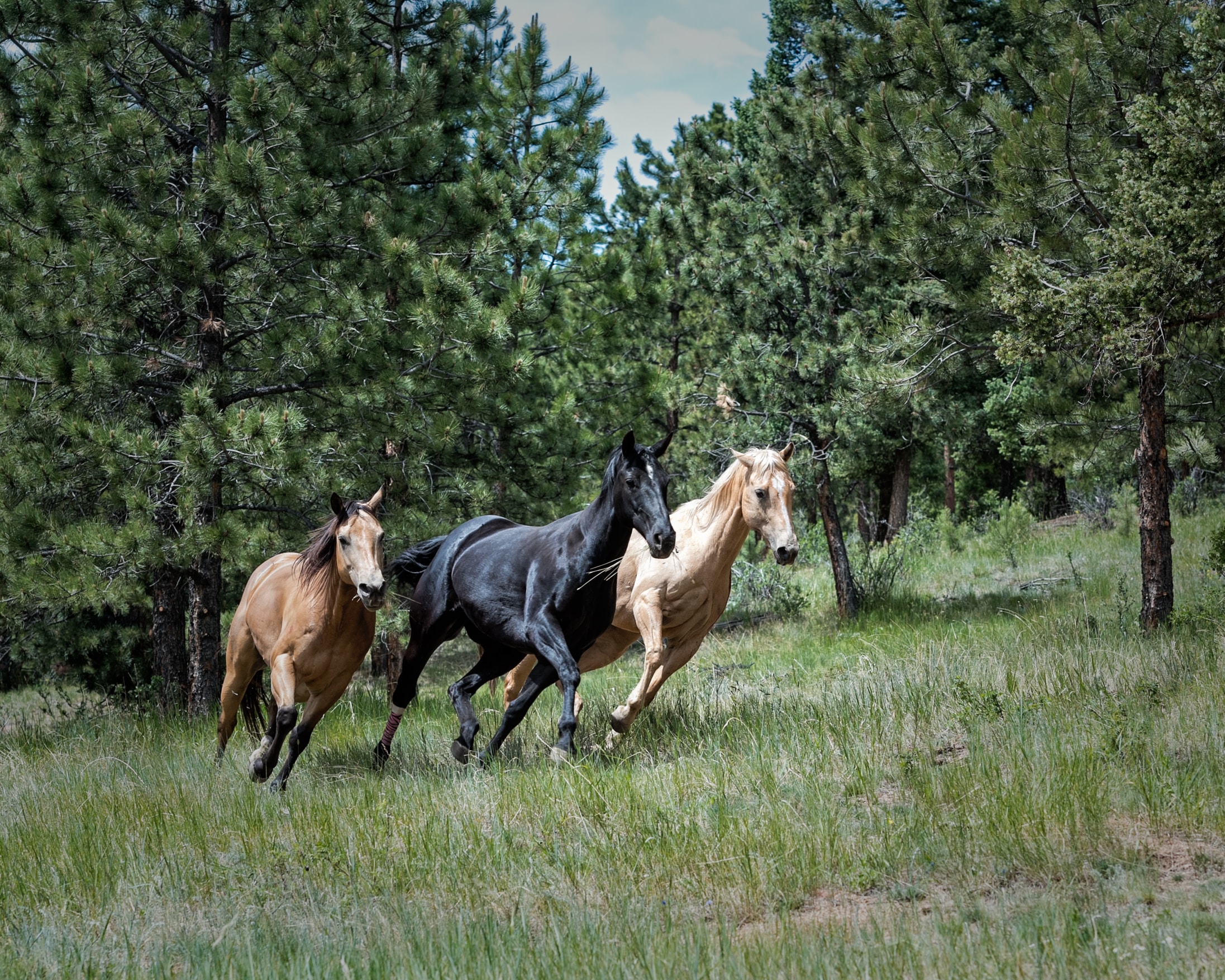Last updated on October 8, 2024
Is Your Horse Typing Up? How It Happens and 4 Ways to Avoid It.

Tying up is a common yet confusing occurrence in the equine world. In simple terms, tying up (officially called rhabdomyolysis) is uncontrollable muscle spasms that can last for hours; generally in the bigger muscles like the gluteals, hamstrings, and back. [1] There are several different types of rhabdomyolysis: exertion-related, non-exertion-related, and traumatic. It can get very involved and very technical, so for the sake of clarity, we will talk about exertional rhabdomyolysis or ER (but we’ll call it tying up from here on out). Symptoms of tying up include:
- stiff gait
- firm, painful muscles in the hindquarters
- reluctance to move or walk
- sweating
- obvious discomfort
While some breeds and individual horses are prone to chronic tying up, generally, it is just exercise-related and not a common occurrence. It is very painful and can cause long-term damage to muscles and kidneys. So what can you do about it? First, you need to know the common causes and symptoms of tying up. Then we’ll give some tips on how to prevent it (as much as possible) from happening to your horse.
What Causes Tying Up?

An exact cause of tying up is hard to pinpoint. According to the American Association of Equine Practitioners, “Tying-up is a syndrome or description of a horse with muscle damage that has many different causes. It probably is one of the most misunderstood and controversial syndromes in the athletic horse. Since there are several causes, some of which appear to be inherited, there is no single cure … .Researchers have learned a great deal about tying-up—or exertional rhabdomyolysis—in recent years. Unfortunately, the information has shown that some of the most common beliefs about tying up have been proven wrong by scientific study. Thus, what was considered by some early researchers to be a problem that had one basic cause, e.g. lactic acid, is actually a broad-scale syndrome that will require continued research on a variety of fronts before every aspect is understood.” [2]
So essentially, there can be MANY reasons a horse ties up, and each horse will have varied causes, symptoms, and cures. But we DO know that the most common reason for tying up is overexertion, especially after a period of rest (1 or more days). Tying up is often called “Monday Morning Sickness,” as strenuous work after being in a stall for a few days eating a high-starch diet can be the culprit for tying up.
Too much sugar in the diet, dehydration, or an electrolyte imbalance can also be part of the problem. Genetics play a huge part as well, and some horses are genetically predisposed to tying up more than others.
Ways to Prevent Tying Up and Muscle Damage

- Proper nutrition is the number one way to avoid tying up. Make sure your horse has a high-fiber, low-starch diet and has a solid intake of vitamins and minerals. Some studies have shown selenium and Vitamin E help reduce the risk of tying up, along with antioxidants. [3]
- Keeping an eye on your horse’s hydration before, during, and after exercise also helps prevent muscle damage. If your horse is sweating a lot, it might be wise to offer an electrolyte supplement (like Mineral 201) to restore electrolyte balance and reduce muscle cramping.
- Just like human athletes, our equine athletes rely on a proper warm-up and cool-down to keep their muscles in top shape. This is important always, but ESPECIALLY after a rest period or a break from training/competition/work. Slowly ease the horse back into their normal workout instead of leaving right where you left off.
- If your horse is struggling with tying up more than what seems normal, contact your veterinarian and consider doing a blood test. This can help determine if there is a nutrient imbalance somewhere or a genetic issue that is causing chronic rhabdomyolysis.
Animal Element Can Help!
Feeding Animal Element’s Foundation Daily Detox and NuTrack Digestive Support will help your horse receive all the important vitamins, minerals, and electrolytes as well as aid in nutrient absorption. They are packed full of nutrient-dense, antioxidant-rich, and anti-inflammatory ingredients…all important in preventing your horse from tying up. As always, consult with your vet for any diagnosis or treatments, or if your horse is in distress. Although tying up can become very severe and cause permanent damage, a little bit of preventive maintenance can reduce your horse’s risk.
All content is meant for informational purposes only, we are not veterinarian professionals. Proudly written for Animal Element by the team at FaithHanan.com
Resources:
- Libert, Nettie, and Carey Williams. “Tying Up in Horses,” August 2017. Rutgers University, Equine Science Center. https://esc.rutgers.edu/fact_sheet/5531/#:~:text=When%20abnormal%20alterations%20occur%20in,that%20a%20human%20might%20experience.
- Valberg, Stephanie. “Tying Up.” American Association of Equine Practitioners. https://aaep.org/horsehealth/tying
- Baldwin, Chris. “Tying Up.” Sussex Equine Hospital. https://www.sussexequinehospital.co.uk/tying-up/#:~:text=Tying%20up%20is%20very%20painful,up%27%2C%20phone%20for%20help.

